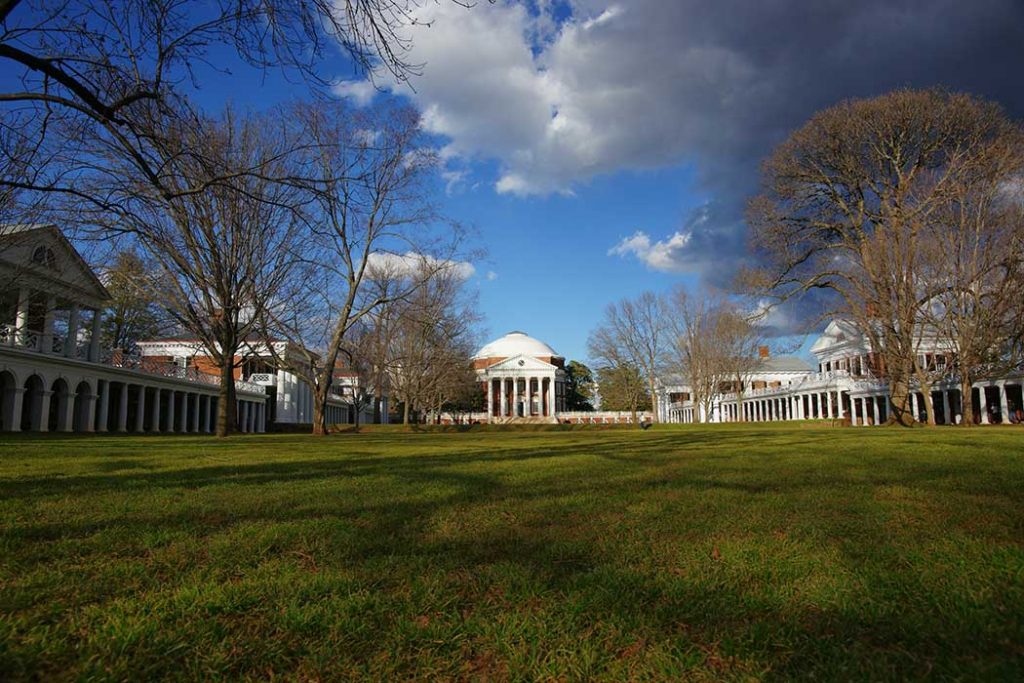An expansive Virginia pasture opens up alongside the third mile of this year’s Charlottesville half-marathon course. The path then drops down on to Clark Road, a snaky, tree-lined gravel road where the next hill—and there’s always another hill—is obscured by trees until you turn a corner and start climbing. Runners pass Our Lady of the Angels Monastery, where the nuns like to take a break from praying every now and then to make cheese, then stomp across a wooden bridge over the babbling Moorman’s River. There’s mystery here in the woods, and mystery is a precious commodity after a year of living in a bubble.
This year, “you fall in to one of two categories,” says James Russell Gill III, a professional runner and one of the organizers of the annual Charlottesville Marathon. “You either put on the pandemic 20, or you start running the pandemic 20 miler.”
There’s some hyperbole there, but I think the sentiment is right. That’s why I’ve been huffing and puffing through the countryside, past the nuns and over the bridge. I’m not an experienced runner, and I’m certainly not a fast runner, but when the virus swept the nation, my world shrunk, and the rewards of running—movement, momentum, a journey—became rarer and more appealing. An adventurous friend suggested we commit ourselves to the half-marathon, and I found myself off to the races at a pace that would not have been possible for me before the pandemic.
According to the local pros, I’m not the only one who’s been craving space and speed. The Charlottesville Marathon (and the half-marathon and 8K undercard races) returns on April 10, after a year off due to the virus. Gill says the event is full to capacity. “A lot of people have become more active,” he says, “and the hope is some lifestyles have changed a little bit.”
Mark Lorenzoni, local coach, race organizer, and 39-year proprietor of Charlottesville’s Ragged Mountain Running Shop, says the early days of the pandemic were anxious, but the running community bounced back quickly.
“After a few weeks we started to just see an explosion of people picking up running, picking up walking for exercise,” Lorenzoni says. “And folks that were current runners found it even more satisfying, because it became their sole form of exercise after the gyms closed.”
Around the country, runners sought the woods this year. “Trail races really took over,” says Glen Anderson, a Louisa-based super marathoner. It’s easier to social distance out in the wilderness, and like the Charlottesville race, many big events were replaced by a more rural equivalent. “Some of the prettiest courses I’ve ever run, those trails in Arizona, Montana,” Anderson says.
Anderson is a dedicated runner who has competed in marathons all across the country. He says he’s run the Charlottesville Marathon “at least 10 or 12 times.”
Even after running throughout the nation, there’s something distinctive about Charlottesville’s rolling hills, says Anderson. Well, maybe what’s distinctive is the sheer amount of hills. “I invite friends from all over the country and say, ‘come run my home course,’” Anderson says. “They run it and say ‘I’m one and done, I’m not coming here again.’”
“We have been so lucky to have an environment where we have venues to go,” says Lorenzoni. “We go out in the country, the trails, the green belt around the city. We’ve got so many wonderful venues that are free. Foxhaven. Ragged Mountain Reservoir. I could go on.”
Last month, Lorenzoni helped put on a safety-modified version of the annual Charlottesville Ten Miler, featuring staggered start times, masks required at the finish line, and a social-distancing-friendly route. Lorenzoni reports that the event was a huge hit as both a race and a fundraiser. Similar precautions will be in effect for the marathon.
“I have this philosophy with my athletes,” Lorenzoni says. “You become your attitude. If you’re negative, and defeatist, and you don’t think you can accomplish something, it’s not going to happen. And I feel that same way about this pandemic. Okay, so it isn’t the greatest situation in the world. Let’s figure out a way to make it count.”
Gill says he thinks the return of the marathon will mark an important moment for the running community in town, after a year mostly full of cancellations, postponements, and just-not-the-same virtual events.
“It’s been a staple for almost 20 years,” he says. “A lot of people build up to it and get excited about it. I think it’s important for the community for something else to feel a little bit more normal again.”
This year’s half-marathon course is an out and back, a truncated version of the full marathon. Some runners prefer a loop, but I like the out and back—I appreciate the neat promise that every climb will be rewarded with an equal downhill. As we break out of the murky woods and haul our asses up the final rise, my legs are heavy and my feet are sore, but I have a pretty good sense of how much elevation remains. We’ve covered a lot of miles, and I think we’ll finish strong.


